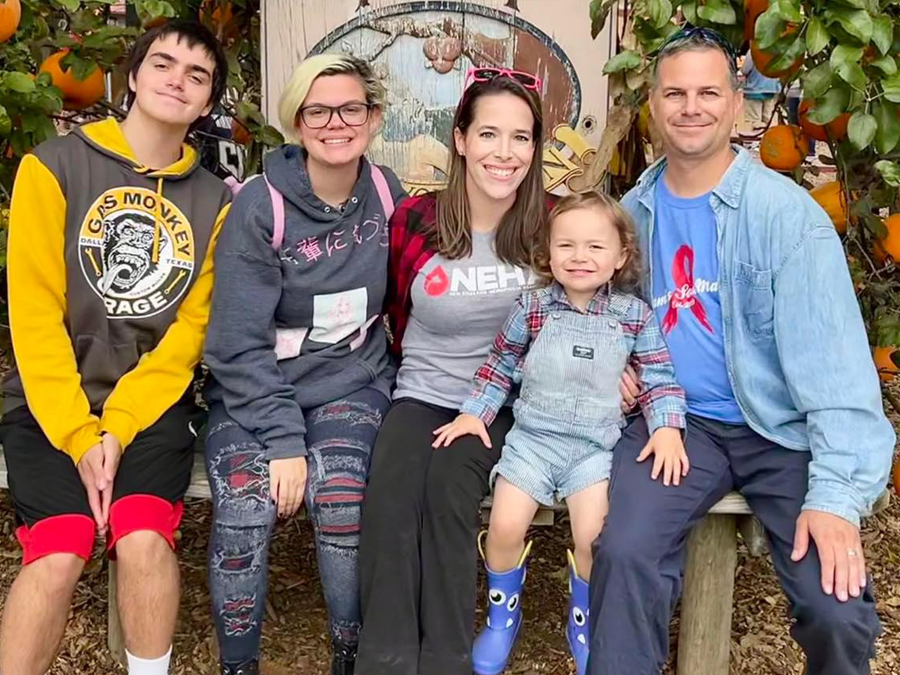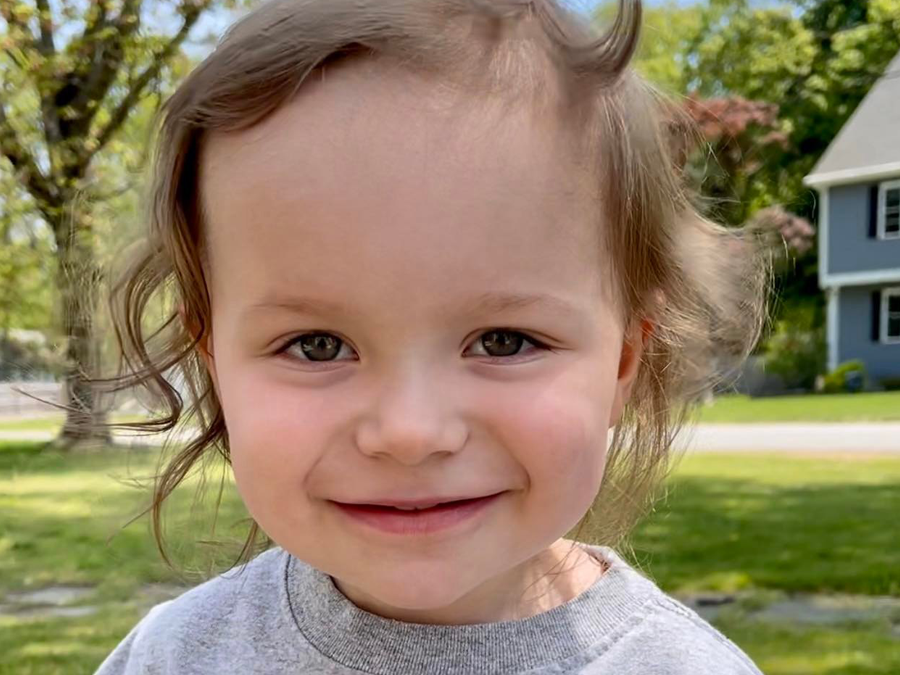Parenting a Child with a Chronic Condition: Trusting Your Instincts and Riding the Curve
By Laura Sousa Wagner (a guest blogger)
Laura shares her story about finding out her newborn not only has a rare disorder, but also an inhibitor. How does a new parent decide on what treatment is best?
In December 2018, our family was changed forever in the best way when our son, Liam, entered the world. Aside from arriving a month early, he was perfectly healthy. He passed all his newborn tests and two days later, we were set for discharge. It wasn’t until a nurse informed us that his circumcision was resisting clotting that we began to sense that anything was off, although with no known history of bleeding disorders in the family, we were not too concerned. Our worries quickly multiplied, however, when a routine heel stick at his follow up appointment bled for two days straight. These bleeding events led to more testing, where an elevated PTT prompted the first discussions of a potential bleeding disorder – a suspicion that was confirmed when Liam was only 5 days old and we received an official diagnosis of severe hemophilia A.
For a while, after Liam was born, I admittedly avoided anything to do with hemophilia. Aside from the necessary doctor appointments, I tried to not even think about it. I did a negligible amount of research, didn’t join any support groups online, and didn’t network much with the larger bleeding disorders community. Still reeling from this life-altering diagnosis, my coping strategy at the time tended towards avoidance, as counterproductive as I knew that was.
A few weeks after Liam’s diagnosis, however, I stumbled upon an article highlighting a new treatment that had been approved only weeks before his birth. It was being touted as a “miracle drug” – a game-changer that promised to prevent bleeds. I was thrilled. For the first time since Liam’s diagnosis, I felt like there could be hope. At his next appointment, I asked his hematologist if this new drug would be a viable option for our newborn. I still remember the acute disappointment at his answer. Although cautiously optimistic about this new product and its safety and efficacy, he was hesitant to prescribe it to a baby as young as Liam.
I was crushed. Back came the overwhelming feelings of helplessness, hopelessness, and worry. Back came the unpredictability and the countless questions – would I be able to recognize his first bleed? When would it be? Would he get spontaneous bleeds? How easily would he bleed? What types of activities would we have to worry about, especially in the coming months as he learned to crawl and walk? Knowing I was in way over my head, I finally reached out to a fellow hemomom with whom I had been connected after Liam’s birth, pouring my heart out to her along with all my fears. Within a few weeks, I had been welcomed wholeheartedly into the strongest group of people I have ever met, joined inseparably by a bond we all share. I will never not be thankful for these people and the support, wisdom, guidance, and friendship they provide.
When Liam was 8 months old, following a routine HTC appointment,
I received a call from a nurse at our HTC letting me know that the results from Liam’s blood work were “off”.
Although he had been infused in clinic, his factor levels were much lower than expected. We were asked to come back in for another round of testing. The following week, I received another call that Liam had developed an inhibitor. It was explained to us that although it is possible to tolerize an inhibitor, it can be a lengthy and arduous process. Shortly after, in November 2019 we started immune tolerance therapy, infusing high levels of factor into Liam’s system five days a week in an attempt to override the inhibitor that was killing off the factor nearly as soon as it entered his system. It has been over two years and hundreds of infusions, and Liam’s inhibitor is still persistent.
At every subsequent HTC appointment, there was always a mention of switching his treatment to the one I had asked about all those months ago, but it was always discussed more as an option than as a recommendation. We were lucky, all things considered – Liam hadn’t gotten many bleeds, other than from a vaccination and one port bleed. There really didn’t seem to be a need to switch, especially to a drug so new. But then things changed. In the span of 7 weeks, Liam had three bleeds, all in the same knee. It was when he was being casted for the third time that the option of switching to this new treatment was first recommended. To be honest, I had thought about it before the nurse even brought it up. Although we had been hesitant, there had also not been a need to change things prior, but our little one’s body was now telling us that our current regiment was no longer working. It was the sign we needed to feel comfortable making the switch.
The days leading up to his first dose were nerve-wracking to say the least. I’m not sure if it was just the change, or the fact that he is still so young, or the fact that I had heard through the bleeding disorders grapevine how painful the injections were that was causing me the most anxiety. And, I’ll admit, the first dose was rough. I knew that if I was going to be comfortable administering the medication to him at home, that I wanted to be the one to give it to him at HTC for the first time. So, with a racing heart, clammy, shaking hands, and blinking back tears, I gave Liam his first injection. I would like to say that it’s gotten easier as the weeks have gone by, but it didn’t take long for him to realize and remember how painful the injection is, and it currently takes two people to get it into him each time. I can only hope the process gets easier over time. The only thing that makes me strong enough to give it to him each time is the knowledge that it is making him healthier in the long run.
As a bleeding disorder parent, I have found that I simultaneously have to think about the future and also not think too far ahead. Every treatment we give him is an attempt to keep his joints healthy, to prevent bleeds, so that his body stays strong and healthy long term. But the worries about long-term side effects of treatment, wondering if that last bleed started him on the course to have a target joint or potential premature joint damage, and the difficulties he will encounter when he starts school are enough to keep one up at night.
Although I have only been at this for three years, I have learned, more than anything, to live in the here and now and to trust my instincts.



To make the best decision for my son that I can today, with the knowledge and support that is available to me. What worked yesterday might not be right today, and that’s okay. Parenting in general is a huge learning curve, but parents of children with chronic conditions always seem to have the steepest ones.
Guest bloggers share their own personal stories. They do not necessarily represent the views of Mylyfe and are not employed by Mylyfe.
Personalized Care,
Professional Excellence
Improving Your Quality of Life Is Our Mission





